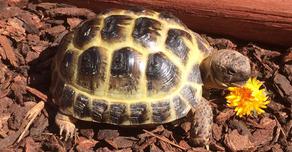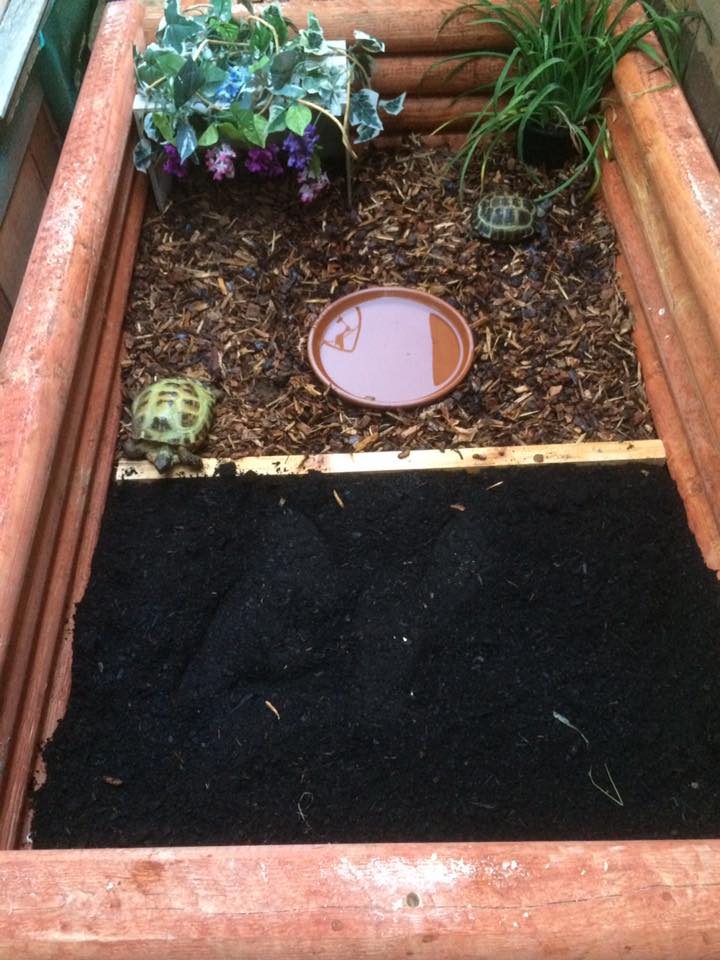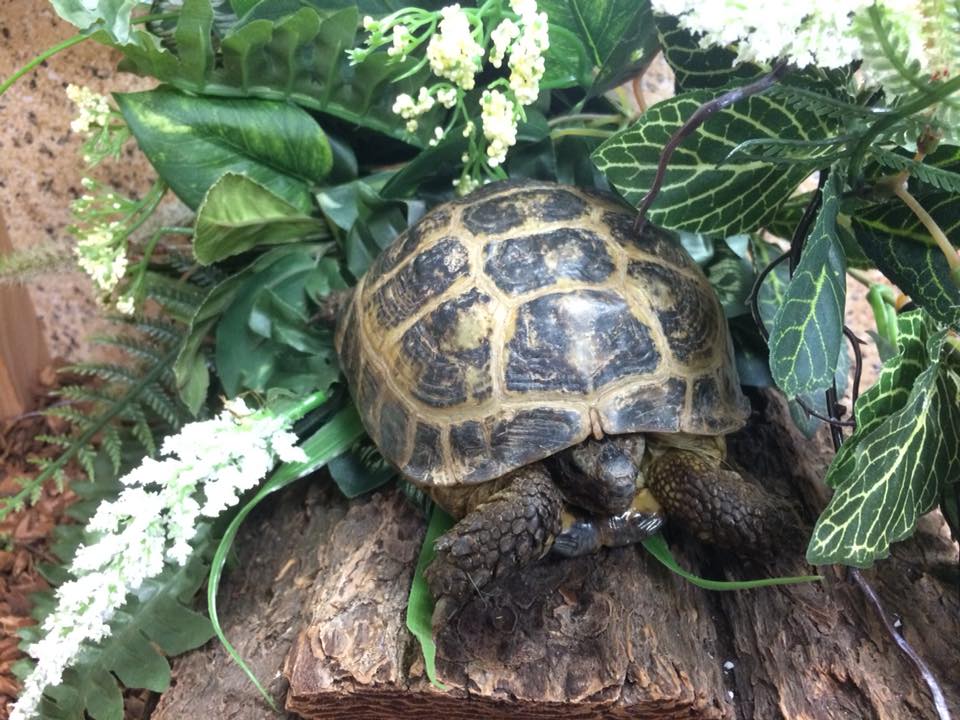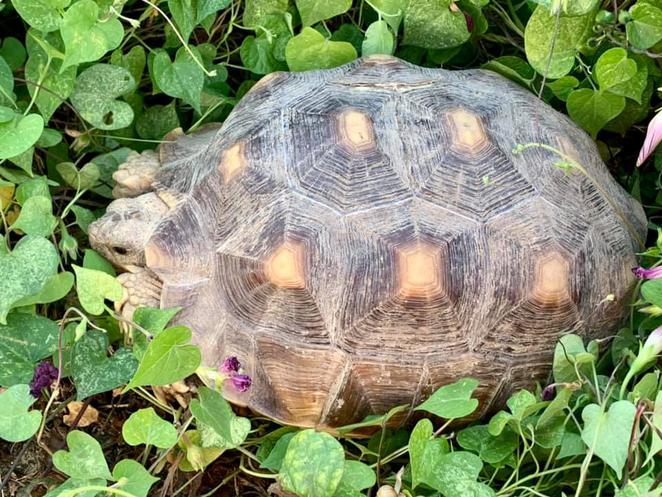About Us
Tortoise Housing
Housing the Russian & Greek tortoises outdoors in a naturalistic pen is always best. During the warmer part of the year, they can be kept in spacious enclosures that are well planted with edible vegetation and receive plenty of time in natural, full sun.
Indoors, the construction of a “tortoise table” will suit the needs of tortoises well. A 3-by-6-foot unit made of ply wood will suffice for a single adult and up to a pair of adults. Wood is always recommended over plastic or glass so that the tortoises cannot see through their enclosure’s walls. This way they will learn their boundaries and it will lessen their attempts to escape.
Check out our Tortoise Enclosure link to see over 560 ideas. https://www.pinterest.com/tortoiseacres/tortoise-enclosures/
If you have the space, always make the tortoise pen as large as you can. This allows for a more natural behavior cycle and reduces stress, especially from territorial or aggressive specimens. Housing males together may pose a problem with them fighting relentlessly. We never keep males together. It’s important to give the tortoises as much space as possible because they could be spending months on end indoors, until the weather outside is once again appropriate for keeping the tortoises outdoors. We keep females together and they do fine.
Lighting, Temperature and Humidity
As always, natural sunlight should be utilized whenever possible and the tortoises fully benefit in many ways from being exposed to it. When housing them inside, proper lighting is essential for keeping them healthy. Many options are available, such as daylight spot bulbs, infrared heat bulbs and fluorescent tube lighting.
Mercury vapor bulbs, which provide both UVA and UVB, are a good choice. A 100- to 150-watt mercury vapor bulb installed above one end of the indoor tortoise enclosure creates a perfect basking area. It also lights up the enclosure nicely.
The opposite end should remain cool.
Tortoise Food
Russian & Greek tortoises spend much of their time gazing on edible landscape. For this reason, it is an excellent and healthy idea to offer weeds such as dandelion, clover, plantain, hawksbit, cat’s ear, wild strawberry and thistle. They also love mulberry and grape leaves.
Store-bought greens such as collard, mustard, Romain, kale and turnip can be offered. Commercial diets such as Mazuri Tortoise Diet are excellent for helping tortoises to maintain good weight, but again, should be offered only in moderation. Calcium supplements in the form of cuttlebone are wonderful additions to their diet; the tortoises will gladly nibble on them. A shallow water dish should be available at all times for drinking and soaking, and it should be cleaned/changed frequently. Tortoises defecate in their water, so keeping the supply clean is a must. Tortoises also appreciate an occasional misting of their environment, which prompts them to empty their bowels and drink.
Russian & Greek tortoises do not need to hibernate to be healthy, so tortoises kept indoors and maintained at stable temperatures will never skip a beat while winter winds blow outside. Keep lights on 12 to 14 hours a day, and turn off all light and heat sources at night.
This page is dedicated to the care of Russian & Greek Tortoises
We built this enclosure on our deck with 2 different types of substraight. The organic soil is great for digging.
Petunias are a tortoises favorite food







